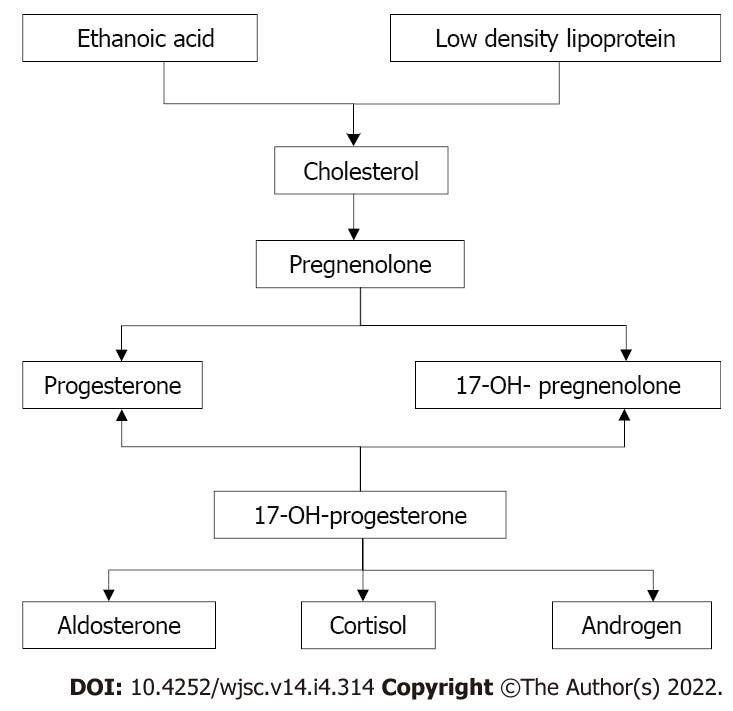Copyright
©The Author(s) 2022.
World J Stem Cells. Apr 26, 2022; 14(4): 314-317
Published online Apr 26, 2022. doi: 10.4252/wjsc.v14.i4.314
Published online Apr 26, 2022. doi: 10.4252/wjsc.v14.i4.314
Figure 1 Schematic diagram of the major steps of corticosteroid synthesis in the adrenal glands.
Cholesterol is the synthetic raw material for all steroid hormones, including those produced by the adrenal glands. Approximately 80% of the cholesterol that is synthesized is derived from low density lipoprotein (LDL) in the blood, and a small amount is synthesized from acetic acid in cortical cells. After cholesterol binds to the LDL receptor in the cortical cell membrane, it enters the cell and is stored in the form of cholesterol. Under the actions of cholesterol-associating enzymes, cholesterol is decomposed into free cholesterol, which is transported into mitochondria via transporters, converted into pregnenolone by cholesterol side chain lyase, and then further transformed into various cortical stimuli.
- Citation: Gu YL, Shen W, Li ZP, Zhou B, Lin ZJ, He LP. Skinny people serum factors promote the differentiation of multipotent stem cells into brown adipose tissue. World J Stem Cells 2022; 14(4): 314-317
- URL: https://www.wjgnet.com/1948-0210/full/v14/i4/314.htm
- DOI: https://dx.doi.org/10.4252/wjsc.v14.i4.314









